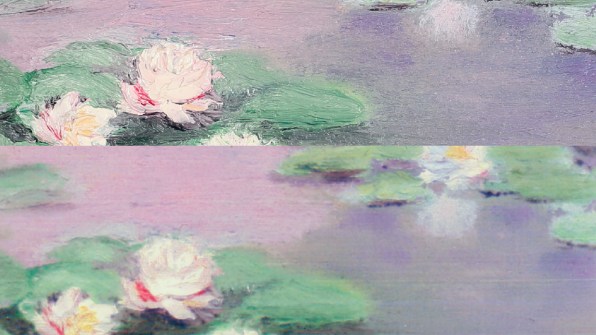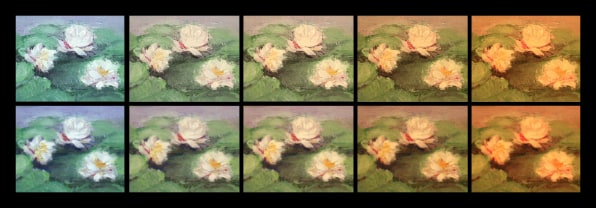We’re entering a new era of cheap and perfect knock-off art
Even the best reproductions of paintings face the same challenge as cheap copies: Their color accuracy sucks.
After all, the pigments that the original artist used–not to mention the infinite number of color combinations created on their palette–are impossible to produce using a traditional printer with only four inks: cyan, magenta, yellow, and black. The CMYK color space is so extremely limited compared to the full color spectrum of true paintings that even the best reproduction looks like crap next to the original. Even specialized art inkjet printers, which introduce additional inks, can’t approach the vibrancy of colors found in an oil painting by Monet or Velázquez.

[Image: MIT CSAIL]
But at MIT, scientists Changil Kim and Mike Foshey have developed a way around this, using a method called RePaint. Using 3D printing, 10 different inks, and artificial intelligence, their technique points to a world of inexpensive, super-accurate cloned paintings.
Instead of using those four CMYK inks and traditional printing techniques, RePaint uses a combination of 10 different transparent inks, placed by a 3D printer and governed by a complex AI system that decides how to layer and mix those inks to match a painting’s original colors.
Each layer is made of billions of little dots, which are laid down using a technique called halftoning. Traditionally, halftone printing uses CYMK dots of different sizes to create images that appear to have millions of colors. However, when you combine the 3D stacking of transparent colors with the halftoning method, the color gamut is much wider than CMYK, and the results are incredibly vibrant and accurate. The MIT team calls their new method “contoning,” and according to their tests, it’s “more than four times more accurate than state-of-the-art physical models at creating the exact color shades for different artworks.”
RePaint–which will be presented at the computer graphics conference ACM SIGGRAPH Asia next week–is accurate, but right now the AI and layering method is too time-consuming, limiting the reproductions to the size of a business card. The system also can’t reproduce some very special, ultra-saturated colors like cobalt blue, because the current 3D printing ink catalog is too limited.

However, the scientists are confident they will be able to fix these two problems in the future, when larger and faster 3D printers become available and new inks are developed. Foshey says that their technology will enable everyone to enjoy inexpensive and accurate art reproductions; in a press release, the team observes that RePaint could help museums by allowing curators to swap out originals for reproductions, protecting them from wear and tear, or producing color accurate prints, postcards, and replicas for sale.
“The value of fine art has rapidly increased in recent years, so there’s an increased tendency for it to be locked up in warehouses away from the public eye,” Foshey comments in a statement. “We’re building the technology to reverse this trend, and to create inexpensive and accurate reproductions that can be enjoyed by all.”
In other words: Brace yourself for even more Starry Night replicas.
Fast Company , Read Full Story
(27)



